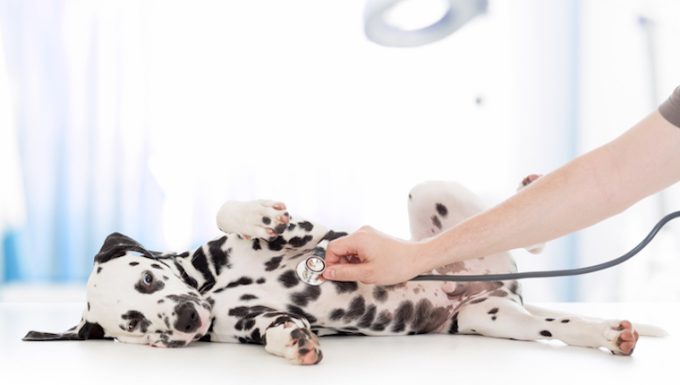Liver disease (copper storage) in dogs happens when too much copper is stored in the liver. The condition is often caused by genetics.
For instance, Labrador Retrievers, Doberman Pinschers, and Skye Terriers are breeds that develop the condition more often than other breeds.
Additionally, female dogs suffer from the condition more than male dogs.
Technically, the condition is also known as copper storage hepatopathy.
If you see the signs of the condition in your dog, then get to a veterinarian for a proper diagnosis and treatment.
Here’s what you should know about the symptoms, causes, and treatments for the condition.
Symptoms of Liver Disease (Copper Storage) in Dogs
The condition produces a wide range of symptoms. For example, some of the most common symptoms include:
- Dark urine
- Vomiting
- Acting lethargic
- Depression
- Diarrhea
- Jaundice
- Anorexia
- Ascites
- Nervous system issues
- Peeing more than usual
- Drinking more water than usual
Generally, the precise symptoms depend on the severity of the condition.
Causes of Liver Disease (Copper Storage) in Dogs

The cause of the condition is often genetic. For example, the following breeds develop the condition more than others:
- Bedlington Terrier
- Doberman Pinscher
- Labrador Retriever
- Dalmatian
- American Cocker Spaniel
- West Highland White Terrier
- Skye Terrier
Additionally, female dogs seem to suffer from the condition more often than male dogs.
Treatments for Liver Disease (Copper Storage) in Dogs
Firstly, your vet will ask about your dog’s symptoms. Secondly, your vet will ask about your dog’s full medical history. This will include breed-specific problems.
Thirdly, a full physical examination will be carried out. Blood and urine tests will be taken. The subsequent results of the tests can show how much iron is in your dog’s blood.
Ultimately, a liver biopsy and ultrasound images can confirm the condition.
Generally, treatment can require intravenous fluid therapy. Additionally, a blood transfusion can be needed in severe cases.
Medication can also be used to help your dog recover from the condition. As always, if your vet prescribes your dog any medicine, make sure to stick to the correct dose and frequency instructions. Also, complete the full course of medicine.
Additionally, diet changes and adding zinc to your dog’s diet can help. This is because many commercial dog foods are high in copper. Your vet can recommend a low copper food for your dog.
While recovering from the condition, it is important to keep up regular visits with your vet. This is to monitor your dog’s copper levels.
Have you ever cared for a dog who suffered from this condition? How did your vet help your dog recover? Let us know in the comments section below.









